
I had the pleasure of speaking with Kevin Schreck, the director of Persistence of Vision, on his new documentary about The Thief and the Cobbler. Kevin traveled to the United Kingdom, New York and Toronto to interview 16 artists who worked on the film. If you would like to get your own 2-Disc Special Edition of Persistence of Vision follow the link below. Only $25 dollars, a great Christmas present for any animation enthusiast!!
Purchase the 2-Disc Special Edition here;
http://kevinschreck.com/#persistence-of-vision-on-dvd
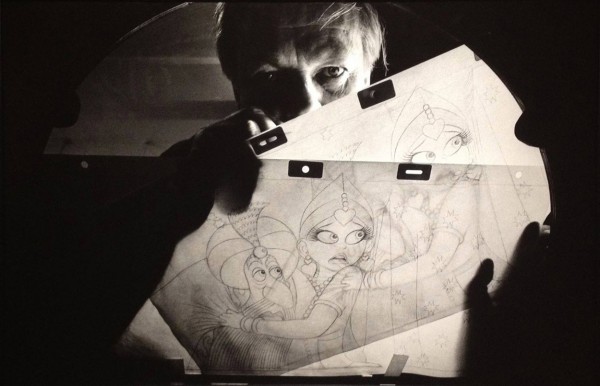
Q.) What made you decide to create the documentary Persistence of Vision?
When I was 11 years old, I wanted to give animation a try. And whenever I asked a professional animator what I should do first, they all said, “Read Richard Williams’ book,” without fail. The book had only been published for a year or so, but it was already the go-to resource on learning how to animate (and has remained so, rightfully). So I studied that when I was trying my stop-motion experiments as a teenager, and this Williams guy definitely knew his stuff and made my juvenile attempts look at least something like animation. But it was a strange that for a guy who knew so much about this craft, that he didn’t seem to have a very big filmography under his name. I only knew him from Who Framed Roger Rabbit, and I was expecting him to have a sort of long list of feature-length accomplishments, like Walt Disney or Ralph Bakshi or Don Bluth or somebody.

Fast forward a few years, and I’m in college. A friend of mine tells me about this supposed “lost masterpiece of animation,” and, of course, that caught my interest right away. It was an earlier cut of Garrett Gilchrist’s fan restoration, The Thief and the Cobbler: Recobbled Cut. I was absolutely blown away by the level of detail, scale, and artistry that unfolded on screen. And then, I saw that name: Richard Williams. I hadn’t seen that name in years. And the riddle was solved: Rather than spending a career of about three decades working on a dozen or 15 feature films, he was, for the most part, spending a career of about three decades basically working on one BIG feature, and doing thousands of little commercial assignments in order to make that possible. So while The Thief and the Cobbler was this stunning, grandiose, tragic epic, I found the story behind the making of the film to be even more fascinating, more epic, and more spectacular. So I became obsessed with this tale of obsession.

Q.) What are some stories that are not included in Persistence of Vision?
Many anecdotes and stories were shared, and I’m certain that countless others have yet to be told. But a few definitely came up that shine. One of our interviewees in the documentary, Greg Duffell, who is this very talented Canadian animator (also from Toronto, like Williams), had some terrific stories to share. I don’t know what it is about Canadian animators, but they tend to be the best storytellers.

Anyway, one story that Greg shared was when was working at the studio from 1973 to 1974, he would see Richard Williams and John Culhane (who was caricatured by Milt Kahl and became Mr. Snoops in Disney’s The Rescuers) running around the studio with these big cork boards and pins, and these stacks of artwork. They were looking for visual reference material for The Thief, and since this was long before anyone could go on Google and search for “Persian miniature art” or “Da Vinci war machines,” Williams and John had been harvesting these big, expensive art books, cutting out the art straight from the books with crude scissors, and pinning the cut-outs on these cork boards. They would say, “We’re storyboarding!” And so he would ask people if they had any books of Middle Eastern artwork or Leonardo Da Vinci’s sketches, but people became wary of him chopping up their books. One secretary or assistant brought in a book, and told Williams that she needed the book in a few days, “so don’t cut it up,” she said. And he’d go, “Oh, don’t worry! I won’t! I won’t!” So she expected Dick’s office, and then, a moment later, realized she forgot to pick up a document or something in that room. As soon as she entered, there was Dick, scissors in hand, just about to make the cut! So she snatched the book from him, and scolded him like a naughty child. And Dick would say, “Oh, you have this silly, middle class idea of books!,” and so on. He was ravenously enthusiastic.

Another anecdote that Greg shared is a bit darker, but also gives you an idea of Williams’ sometimes irrational passion. Dick had great pride for the work they did at the studio, and always wanted to deliver 110% to the clients. So he became very frustrated if anyone left the artwork out carelessly, where it could be stepped on or dirtied or something. Anyway, Dick was minding his own business, walking down the stairs with a mug of coffee in hand, when on his way down, he saw some artwork for a commercial that a recently hired animator had momentarily left behind as they went to the bathroom or something. But Dick didn’t scream his head off this time. Instead, he channeled his anger physically. He stared at the stack of artwork, then looked to the left to see if the perpetrator was there, and then looked to the right. With nobody to blame, he simply poured the remainder of his coffee on the stack of artwork, and kicked the pile of drawings down the stairs. It was his way of saying, “This is what can happen if you don’t respect the work that you do here.” It’s clearly a bit hypocritical, and I don’t know how much of it is true, but it shows just how fiery and passionate Williams could be.


There are a lot of fascinating anecdotes in the documentary, too, and there are several more on the DVD in the Q&A’s and deleted scenes. Our interviewees did a great job of bringing that world to life. It was a huge honor to speak with them.

Q.) Did you reach out to Richard Williams about the documentary?
Definitely. But I never expected him to really go on record and participate in the documentary. So while it was worth a shot, we pretty much planned on interviewing various artists, animators, writers, and other people who were involved in the making of Richard Williams’ film and who worked with him to help tell the story. And, thankfully, we had a terrific supply of visual historical artifacts, like television interviews and verite footage of them working behind-the-scenes, to help tell this story and bring it to life.

Q.) Do you know if Mr. Williams has seen Persistence of Vision?
I don’t know, actually. I sent him a festival screener a while ago. I felt it was just the right thing to do, but to let him make his own mind on if he wants to watch it or not. I don’t feel any desire to pressure him. The ball is in his court, as they say.
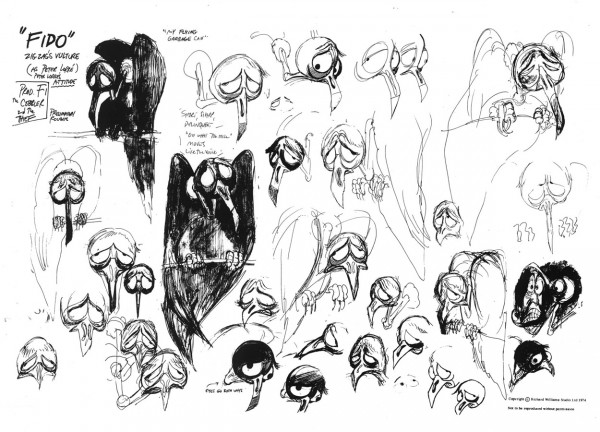
Q.) About how many animators & artists roughly worked on The Thief and the Cobbler?
Honestly, it’s very difficult to estimate. But Richard Williams had his studio in London for roughly three decades (about as long as he was developing his magnum opus). So throughout that time, there was a lot of work to be done on commercials, feature film titles, television specials, etc. But when they didn’t have a commercial assignment like that to do, Williams would just give them some work on The Thief to polish up. He felt it was essential as a way of training his team and to continue progress on the film. So whether they were adding flies buzzing around the Thief’s head, or arrows flying through the climatic “Battle Sequence,” or adding jewels glistening, he wanted to keep the film going. So I would bet that pretty much everybody who worked at the studio was involved in the creation of his passion project in some way.
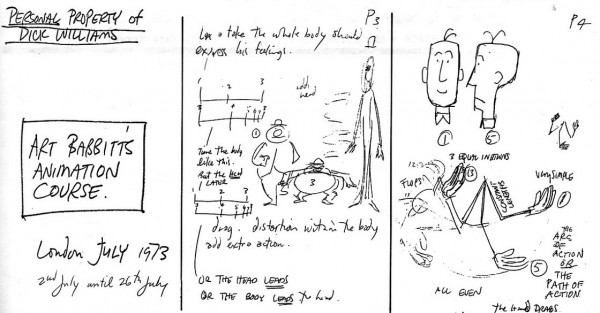
Q.) Can you tell us a little about the DVD special features?
The idea was to sort of kick it old school like it’s 2002, and deliver something that film fans, animation fans, and just anyone who might be interested with a treasure trove of supplemental materials. It’s what I would like to have if I had a physical copy of a movie that I really enjoyed and wanted in my collection, so I wanted to deliver that to anyone else who felt that way about this movie.
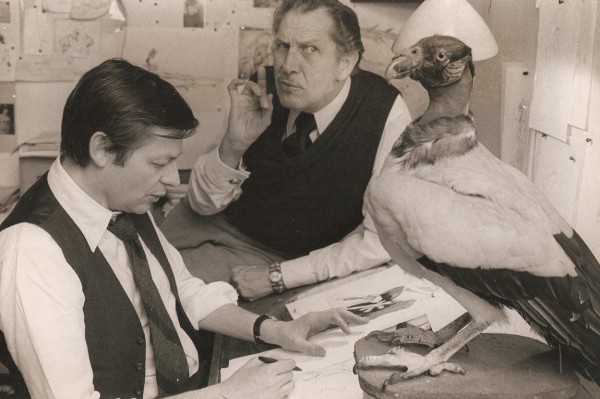
There is roughly 3.5 hours of bonus features on the DVD set. Most notably, we have the workprint of Richard Williams’ The Thief and the Cobbler from early 1992 in its entirety. It’s the most accurate representation of what Williams wanted to make for over a quarter of a century, just before his involvement with the film ended. There’s also about 33 minutes of the best pencil tests and rare rough animation clips that we uncovered while making this documentary, including a lot of footage that hadn’t been seen in over two decades, and some that even date back to the late 1960s.
We also have a couple of in-depth Q&A’s that explore both the making of the documentary, the making of The Thief and the Cobbler, and much more: one with myself, and one with Canadian animator Steve Evangelatos, who is a highly animated character himself, and has some spectacularly funny anecdotes about Richard Williams and working on that film. We also have deleted scenes from the documentary that reveal even more about the story (such as working with actor Vincent Price, confrontations that Williams had with crew members, and information on Williams’ life as a jazz musician), and international TV clips and trailers from its film festival life. All kinds of stuff.

Q. We know you did a lot of research on The Thief and the Cobbler & Richard Williams, any last remarks or anything you think our readers might want to know?
I tried to make the documentary be able to speak for itself. There’s no condescending, singular “God voice” narration to tell you exactly what to think and feel. This documentary is made from the accounts of numerous different people, each with their own personalities, viewpoints, memories, and biases. I’ve had people come to me after watching the documentary who adore Richard Williams and worship him, and tell me this captured his personality and character accurately. And I’ve also had people who dislike him or had disagreements with him, and they ALSO say that they felt the portrayal was very accurate. So it’s interesting to receive those reactions that have a lot in common even if the opinions differ. Most importantly, I love hearing from people who had no prior interest in animation or cartoons or even filmmaking before seeing the documentary, but they also find it riveting or affecting or moving. That means the most, in some ways, because that means it worked on a human level, beyond just being about animation.
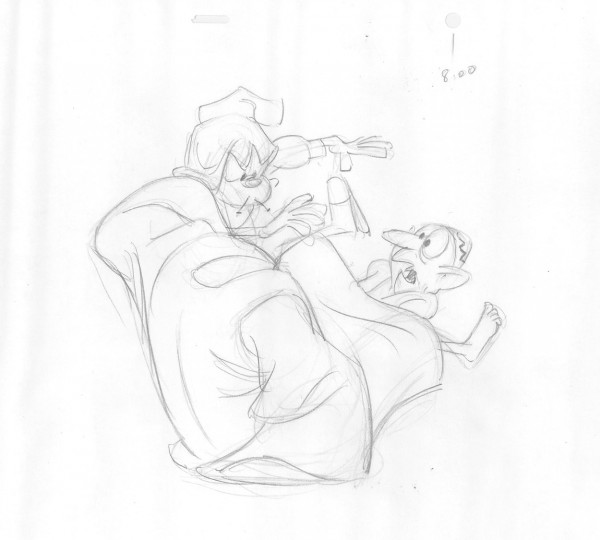
Richard Williams is a genuine artist, in my book. I do hope that 100 years from now, and 500 years from now, and so on, that he will be thought of as someone who like the Rembrandt of animation, or the Mozart of animation. He really is of that level in his respected field. But I was also determined to not make some fawning, fanboy wank of a movie about this guy. I don’t really care for hero-worship movies that have a very biased perspective, or ones that go out to vilify people. I like seeing a three-dimensional portrait of a human being, flaws and all. The top priority was always to tell a good story, first and foremost, and the true story (whatever that is) in the best way possible, even with our limitations (which everyone has). So it’s ultimately up to the viewers to make up their own mind of who he was, what went wrong, how it could have been different, and so on. I like it when the movie has a life beyond when the screen goes dark and when the music fades out, and it persists and lives on in conversations.

Q.) What makes Traditional Animation special to you?
What I really like about the Traditional Animation websites and online communities is that it celebrates the art of animation in a very simple way. You get these samples of artwork — model sheets, rough sketches, concept designs, storyboards, etc. — simply delivered to thousands of people immediately. And they can be used and appreciated however they want to be. Some people gush over and geek out on the artwork or the films they come from, others might use these amazing little artifacts as a source of artistic inspiration, some people provide historical tidbits and facts to give these artworks an informed context, and some people have heated debates about the work. It’s a fantastic venue to explore the possibilities and artwork of traditional animation, and it is a legitimate form of art.
Thanks Kevin Schreck for the interview!
Check it out on Facebook: Persistence Of Vision Official Documentary Page
2 Comments
Great art! We need more shots like these ones in 2D animation, great to see!
You can become an artist too!
Try it! Take a look!
http://www.animationabc.com/workshop-breakdown/